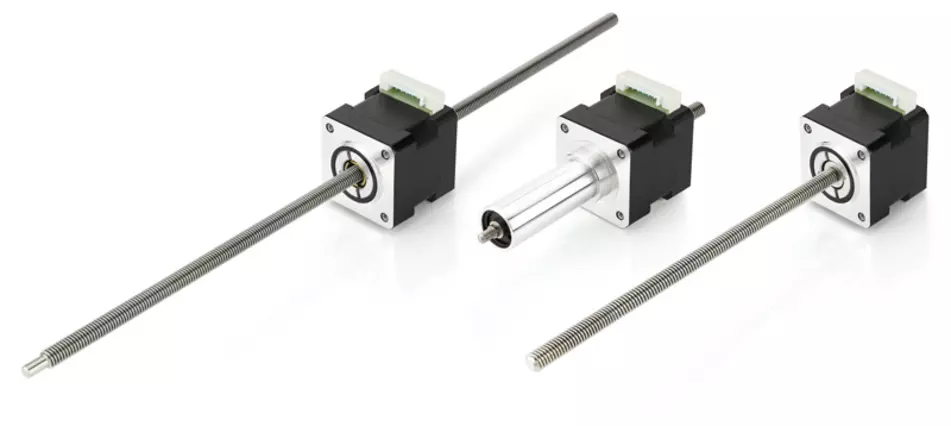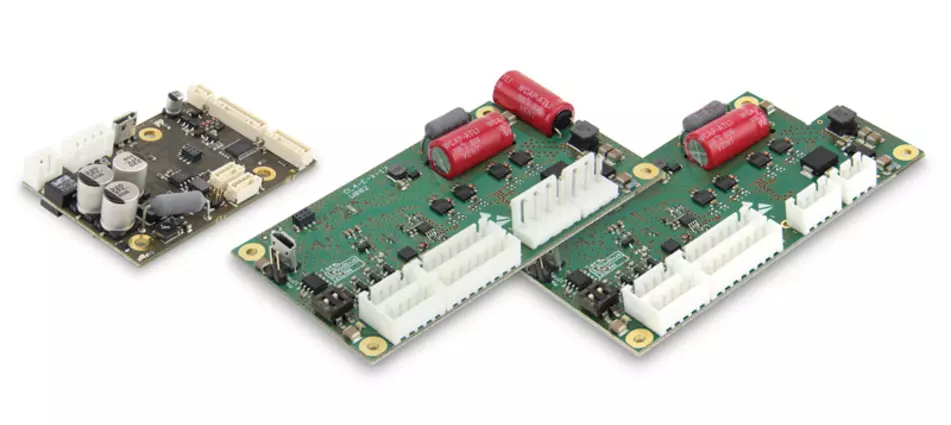In order to obtain repeatable results in molecular diagnostics and forensics, medical laboratory equipment is increasingly replacing the manual process steps for analyzing proteins as well as DNA and RNA samples. One key process is the automated feeding of large numbers of samples. For this pick-and-place application, the laboratory devices are equipped with robotic arms and grippers that are driven by hybrid linear actuators. Nanotec offers three types of linear actuator: non-captive, captive and external.

Tailored to the specific application
Linear actuators without linear guide (non-captive) are hybrid stepper motors where the threaded nuts are injection-molded and positively connected in the hollow shafts. To enable the linear motion of the lead screw, an external guide must be provided at the gripper to prevent the lead screw from rotating. Apart from the standard lead screws, the linear actuators can also be combined with individually modified lead screw ends and lengths.
The linear actuators with linear guide (captive) have the same design as the previously mentioned type, except that they have an internal linear guide. This linear guide primarily consists of a driving rod, a polygonal profile and a fixed guide tube. The driving rod and the polygonal profile are permanently connected to the lead screw, move with the lead screw when power is supplied to the motor and form a moving, highly precise shaft-hub connection with the guide tube. Numerous hub lengths are offered as standard – further stroke lengths are available on request. Compared to the predecessor version, the new generation of linear guides is approx. 75% more compact and features less rotational backlash.
Unlike the first two types, the lead screw of the external linear actuators is permanently fixed to the motor shaft and rotates with the shaft when power is supplied to the motor. If an external threaded nut is mounted on the lead screw and secured against rotating by means of an externally mounted guide, the threaded nut moves along the lead screw axis. The standard versions of the threaded nuts have backlash. With this linear actuator type, however, it is also possible to select anti-backlash threaded nuts used to compensate the axial play in the screw drive.
All three linear actuator types are available in two motor lengths (single stack or double stack) and can be equipped with different coil windings. Together with the NEMA size and the thread lead, the above options are the main factors influencing the force-velocity curves of the linear actuators. These curves are used a) to compare the performance of the linear actuators with each other and b) to assess the selected product with respect to the respective application.
Durable, reliable and compact
Operation of the linear actuators in an open control loop without feedback of the motor position is enough for most applications. If, however, a particularly smooth and precise run is required at high speeds or optimized power consumption and thermal dissipation are desired, the linear actuators can be optionally equipped with an encoder and operated in a closed control loop with feedback of the position signal. Moreover, encoders can be used to regulate the driving force, whereby the linear actuators can be controlled via fieldbus, clock & direction as well as analog/digital inputs. With compact laboratory devices, it is usually the case that a clearly defined space is provided for all controllers in the device. The space-saving motor controllers without housing are ideal in such cases.

A unit comprising an external linear actuator of NEMA size 11 and a matching motor controller in an open control loop has proven to be the optimum solution for laboratory devices. The gripper is designed such that it is opened by a helical spring and closed by the linear actuator. The linear actuator operates reliably and robustly over the entire service life of the device and enables the automated feeding of many kinds of proteins and nucleic acids.
Author:
Dr.-Ing. Alexander Naubert
Product Manager
Nanotec Electronic GmbH & Co. KG
